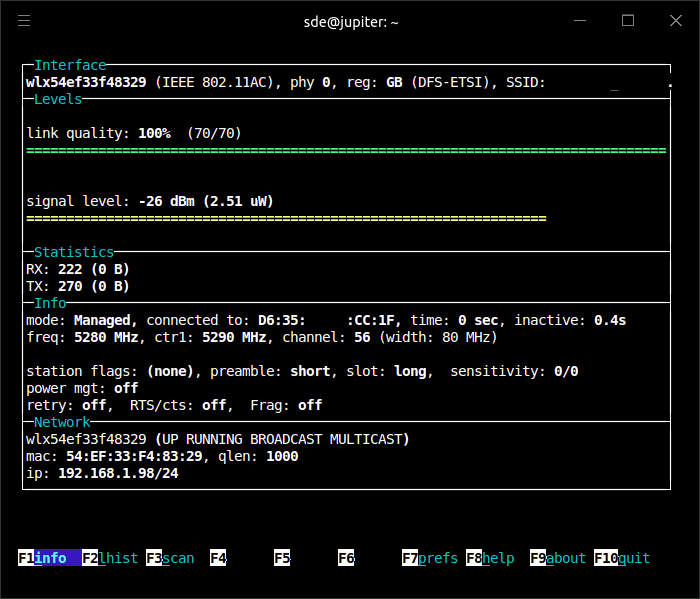Last Updated on January 9, 2023
In Operation
We tested the AC3L with the Technicolor 4134 (Wi-Fi 6) and SmartHub 2 routers. To test typical day-to-day performance, the router was placed a few metres away from the antenna but in a different room with a fairly thick intervening wall. That’s intended to mirror a fairly representative setup for home Wi-Fi systems where it’s possible to locate a PC fairly close to the router.
Let’s inspect output from wavemon. This utility is a wireless device monitoring application that allows us to watch signal and noise levels, packet statistics, device configuration and network parameters of wireless network hardware.
Here’s an image of the AC3L device with wavemon. As you can see, link quality is perfect and signal level is very good. Remember that link quality and signal level are not necessarily a good indicator of transfer speeds. The image shows a signal level of -26 dBm. With careful placement of the antenna we were able to improve the signal level further. This is better than the BrosTrend’s AC1L USB WiFi Adapter.

wavemon offers a handy scanning function (activated with the F3 key). As we next perform speed tests, we make sure that each router is on a clear channel (to avoid any interference from nearby routers).
Here is an image showing performance statistics using the iperf utility. The local machine (IP 192.168.1.92) is connected to the router via gigabit ethernet.

We repeated this command a dozen times to get an accurate sample (the overall average was around the figures shown above). The average figure is higher than obtained with the BrosTrend AC1L. Like the AC1L, packet loss is extremely low.
How did the AC3L fare in the worst case scenario? In a home environment this is often where the PC is located on a different floor to the router in the furthest room away. Lots of walls to go through.
The AC3L managed around 125 MBits/sec in our worst case scenario test. This is significantly better than the AC1L device we previously reviewed which managed a respectable 98 MBits/sec. The transfer rate for the AC3L wasn’t quite as fast as the Lenovo T470 laptop’s internal wireless which recorded around 145 MBits/sec.
Pages in this article:
Page 1 – Introduction
Page 2 – In Operation
Page 3 – Summary
